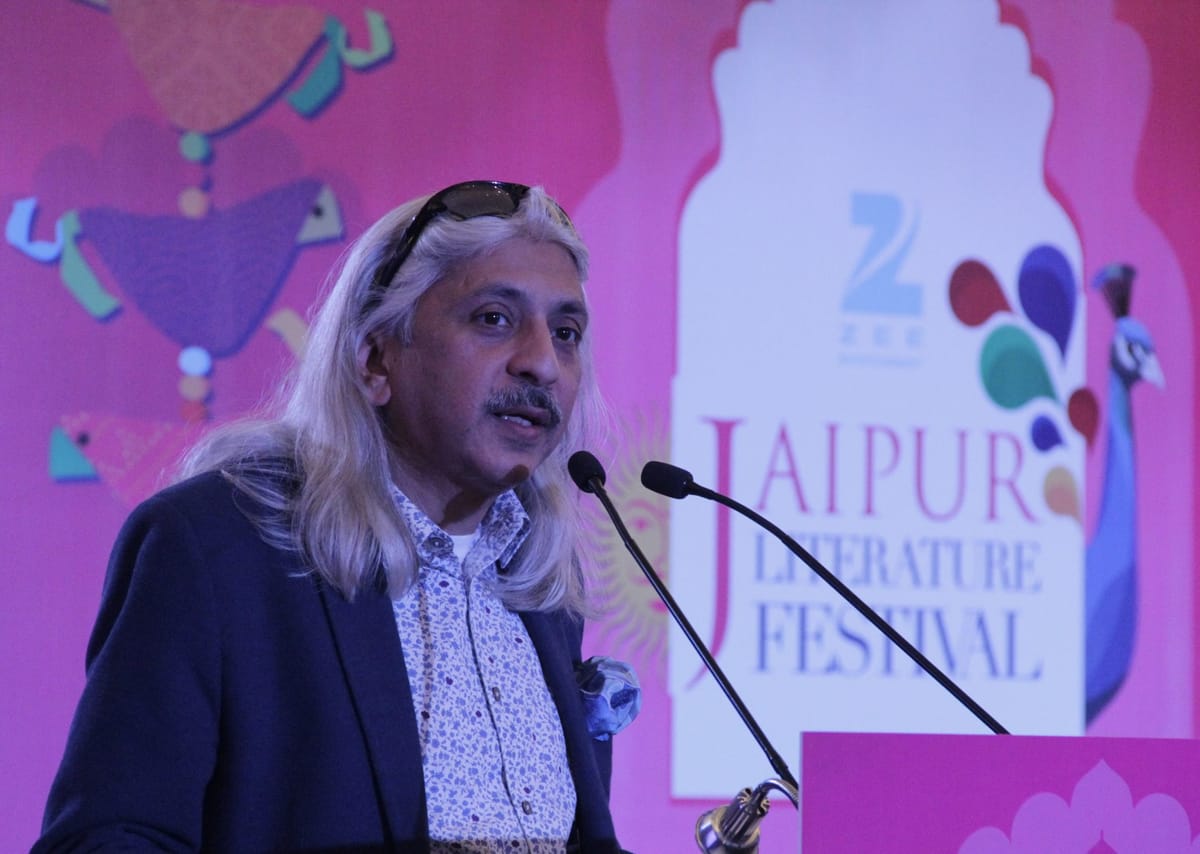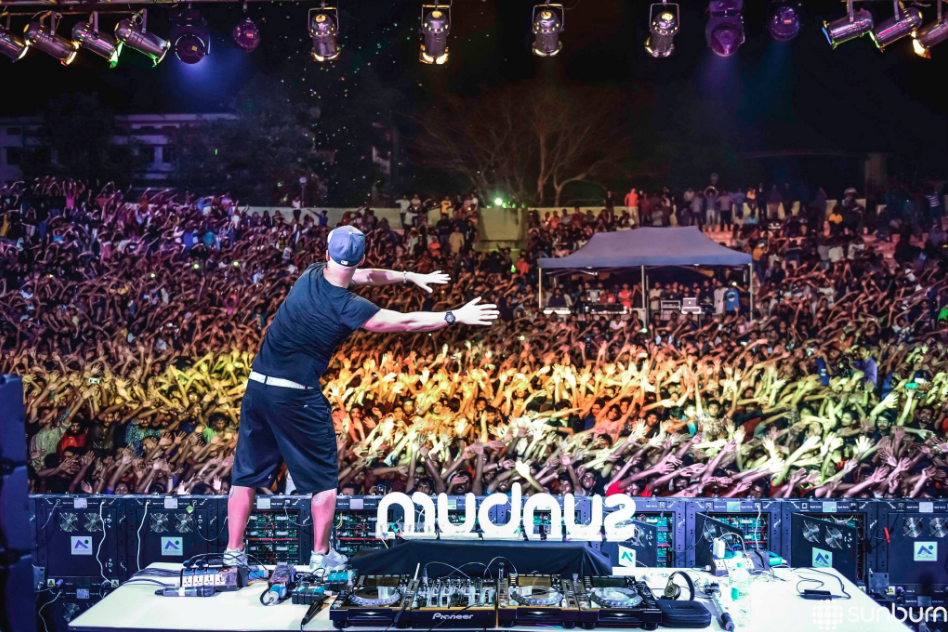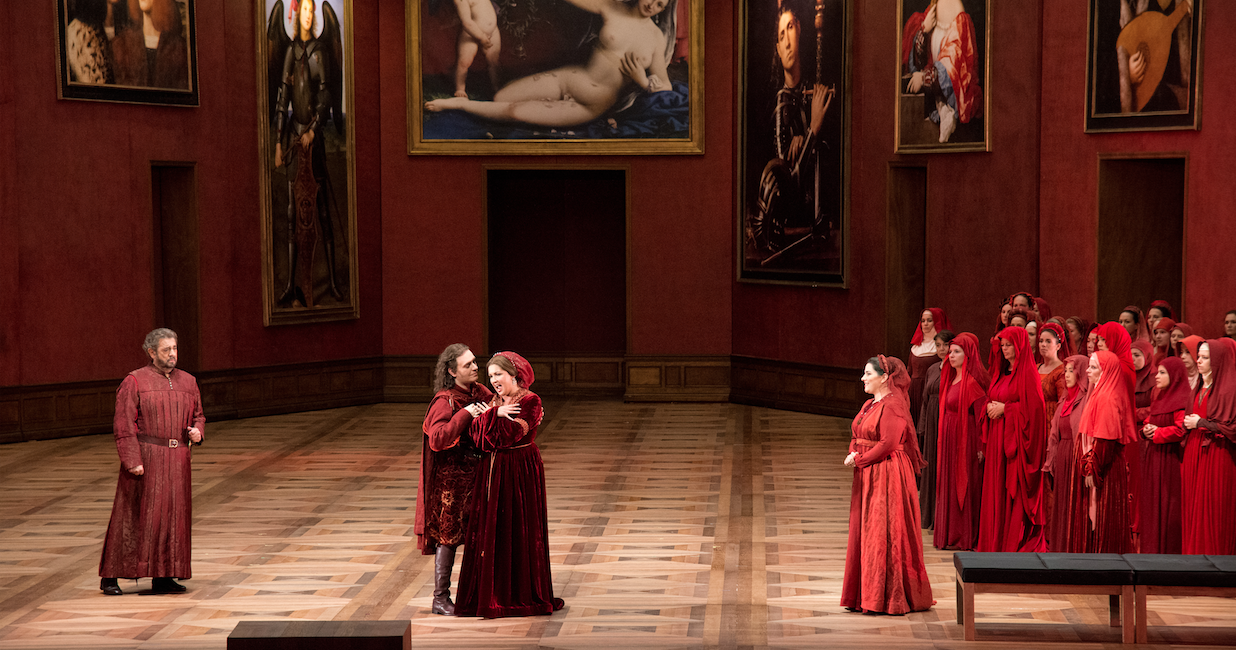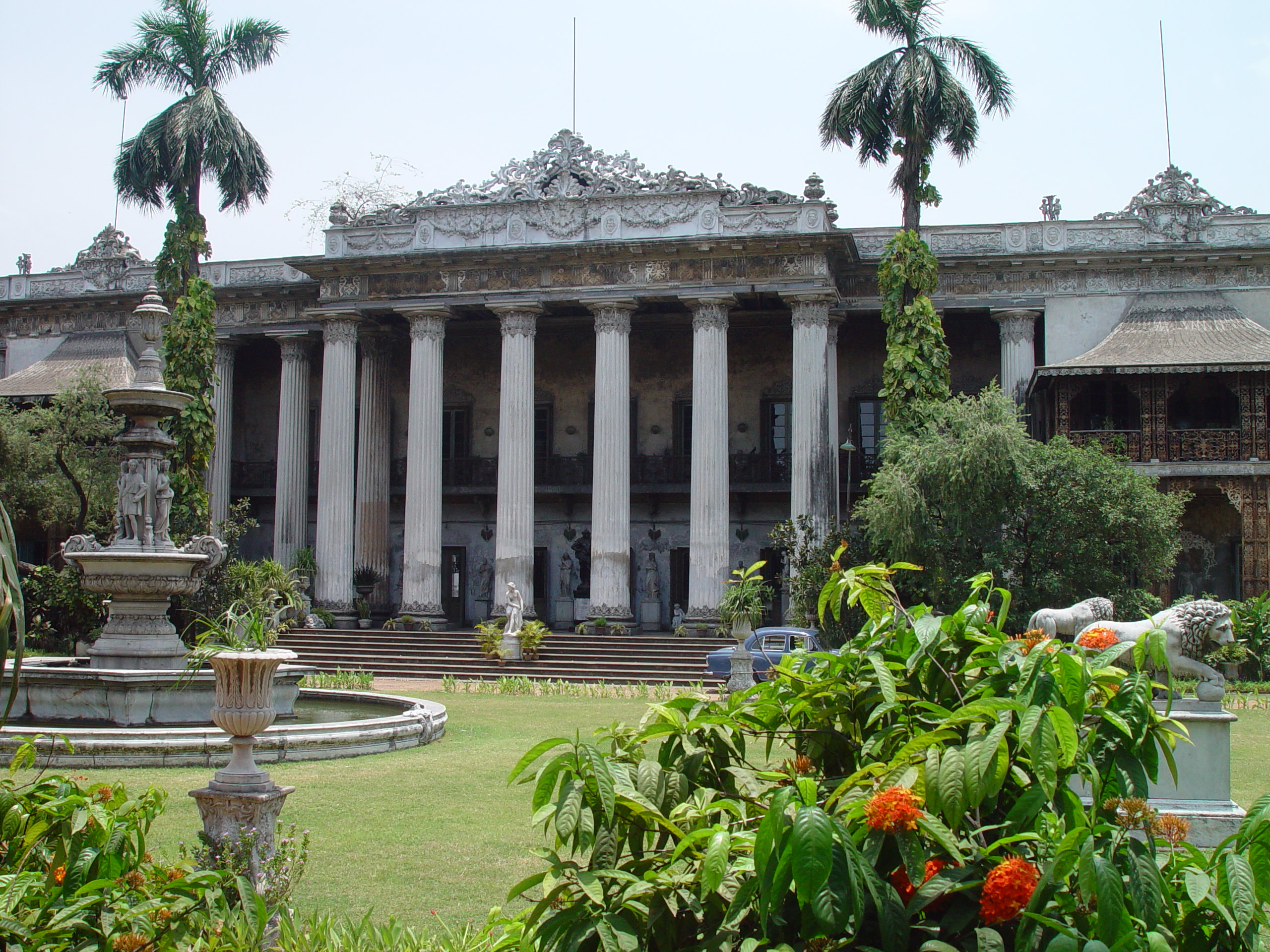Sanjoy K Roy – Managing Director, Teamwork Arts

This year, after the Jaipur Literature Festival, we had the opportunity to speak with Mr Sanjoy Roy, the Managing Director of Teamwork Arts on a variety of topics related to the arts, their impact across the world, especially in India, and get an insight into what we could perhaps do to elevate the scene in our country.
Here is an excerpt from our interview:
Nikhil Sardana: Please share your background with us.
Sanjoy Roy: I have lived in New Delhi for most of my life. I completed by schooling from Delhi Public School, but most of my higher education was at Bombay’s Cathedral and John Connon School and before that in London. I moved to Delhi in the 11th grade and went on to St. Stephens College followed by the Law Faculty.
When I was at St. Stephen’s College, I started acting and administering performances at Barry John’s Theatre Action Group. After completing my degree, I decided not to go abroad and continue to be here. Theatre has always been my passion in my life, from the school level to the university level and that still continues. At TAG, many of us who were in theatre had no real means of earning a living and at that point Teamwork was set up as a way to be able to showcase some of our theatre productions so that one rehearsed and performed in the evenings while doing a day job. That was the sort of initial background, in a sense, of Teamwork.
NS: Electronic music has Sunburn, Literature enthusiasts have the Jaipur Literature Festival, do you envision other performing art forms to develop and achieve such levels of success in the next decade in India?

SR: I think there are enough opportunities across art forms to create those big celebratory occasions, but, when you look at, say, a Sunburn or a JLF, what actually stands out is the experience of it. It is not necessarily seen as just an event: one goes to Sunburn during New Year’s with a particular mindset and you are part of a larger community celebrating that particular mindset at that point of time and its this collective energy which gets you to come back again and again with more and more people. That’s what Sunburn is about and, as you know, even at JLF, I keep saying the magic is as much about the crowds there as it is about the authors being able to speak to this ocean of humanity when they look out on a Front Lawn or a Charbagh or a Mughal Tent, as it is about the speakers themselves, as it is about the colour and the quality of being in such an incredible heritage space. So it is a collective experience. Can that collective experience be replicated? Yes it can. Look at the Salzburg Festival.

Why is that such a stand out festival? Because it is experiential. Of course one goes to the amphitheatre there to listen to the best, or to the Edinburgh International Festival which over its duration is an incredible amassing of humanity from all across the world, and has all this incredible younthful energy, but its that experiential aspect of it which… you know, you go somewhere, throw away the key to your daily concerns of money, time, meetings, etc. and you imbibe a particular experience.
So even in India, if you are able to create that for a particular art form, I can say with a hundred percent surety that it will succeed. I don’t know if you were around when the Marble Palace concerts used to happen in Kolkata that were sponsored by the ITC – it was experiential – which was the reason why it reached the heights that it did. The season in Chennai during the festival time, where you go from sabha to sabha, etc. and at the classical space if all the sabhas were able to come together and market themselves under one umbrella, it is as big a festival as the Edinburgh Festival.

So there is nothing that is stopping us from being able to create incredible opportunities across art forms. Look at the India Art Fair: whether you like it or don’t like it is irrelevant; but when you go there and engage with the trade fair, the way it is curated and the way that you can immerse yourself in the incredible range of Indian art, you can spend days there and that is what the experience is.
Do we have the ability to be able to do it: absolutely. Do we have the sense of what needs to be done: perhaps. Can we replicate it in a way that a JLF or Sunburn happens – we need to think out of the box.
NS: You have many festivals that Teamwork Arts produces every year. What motivates you to keep going?
SR: Again, going back to my early days, when we were in television between the late ’80s and early ’90s, we really were like a factory, as India had just begun expanding its broadcasting sector. Doordarshan has just loosened up its policies, new programs were being produced and then of course the video channels came on and much of what we were doing was daily soaps and game shows and so on and so forth.
By 1995, we had become a Factory for Creativity rolling out various shows for different audiences.
I remember we used to have meetings every Saturday where all the producers, directors and colleagues used to come together and discuss who to kill off or who’s acting is not up to the mark or who was creating a problem. And it was at one such meeting that two of my colleagues were not still with us. I said, “Listen, we are brain dead and we can’t do this anymore!”, and I said in a moment of foolishness, “Yes, okay, fine if you don’t want to do it that is fine.” We were used to making money and decided to stop. We took six months to stop as channels were annoyed with us because we were taking away the programs and in the process we nearly went bankrupt.
Having stopped making programs for television, we decided to go back to the fundamentals of the arts so we concentrated on ‘Friends of Music’, which had already been created by my colleagues. And many of the world music groups that have come out of that – Indian Ocean, Vigya and Parikrama, etc., all, in a sense, owe their origins to those platforms. That was where we were successful and then we commissioned new writing in theatre, some of which was also very successful and had lots of audiences attending… and we did the same thing in Dance.
By 1999, we had all of this commissioned work but not enough platforms in the country to be able to showcase the work that had been created! Meanwhile, in 1996 my wife had an accident and I hadn’t cut my hair and my son had come to me and said, “Papa, are you planning to cut your hair?” and I replied, “Why?” and he chastised me, “If you don’t cut your hair, you can’t come to my school!” To me this was freedom! I grew my hair to escape from the annual school engagements where the teachers lectured you on how badly behaved a parent you were. So I grew my hair – and, yes, it has always been salt and pepper. Much of the UK universities and organisations thought, they had in me someone who spoke their language, ticked their box for diversity and had the right colour of skin at that point of time and had long hair so must be a creative, in some sense. So that led to me doing lectures in many parts of the UK and creating a network there and that then resulted in 1999, when we set up our first platform for the arts at the Edinburgh Festival. And everybody told us that we were crazy – because if you want to do the international festival, you shouldn’t be doing the Fringe, if you do the Fringe, you can’t do the film, if you do the film, then you can’t do the book festival. For us, coming from India, we have so much of stuff and here you work across a genre. We were to present a cross festival and for the first time created a really successful cross festival platform at the Edinburgh Festival which was hugely celebrated. So we set up shop in Singapore, Indonesia, Australia, and onwards literally across the world. And for me, this is not work, you have access to the best work, you see these incredible performances, you see a lot of rubbish, I see a lot of rubbish myself. But each time the curtain rises, there is that anticipation and when you see something that lifts your soul or celebrates the mind or you read an incredible book or you have a conversation, as you did with the Stephen Fry, we don’t just do this in India, we do this across the world and every bit of it is an education, it is a learning, it is a different point of view: you learn about history, culture, you go to Jerusalem, you walk on the streets and feel the incredible sensation of being immersed in 5000 years of history! I mean, what can I say… its a charm… It’s being impassioned, when in a sense you have the world at your feet and sure, if I wanted to make lots of money, I would have to be a banker or a business person, but that was never to be the story of my life. This is what I got my rocks on and I was basically being able to indulge myself in what most people said was an hobby, but was actually my forte. It is my profession and I am delighted that it is. Its been an amazing journey.
NS: We need more arts centres and performance opportunities in India. Why do you think the arts and its education is important? How do we look at patronage in India?
SR: In today’s extremely divided world, wherever there is mankind, there has always been a division created between religion and caste and colour and creed. The only thing that cuts through much of this is actually the arts: the arts know no language, know no definition, know no boundaries and they can cross every barrier, both national and international. You can access another country or another society or another caste or religion, history or tradition or language, practicalities, sociologies, philosophies and economies, through the arts. I remember in 2001, I saw this incredible Swedish production in their language. I was just convinced that it had to come to India because the visual language was so incredible and everybody thought we were crazy and would lose a lot of money due to the language barriers. And I said that it didn’t matter what the language was because it would transcend that. And sure enough, everybody was lined up in Delhi, Mumbai, Kolkata, Chennai and Bangalore waiting to get in.
Most importantly, a lot of people don’t realise how the arts create wealth – we know that they create intangible wealth – but I continue to make the case that they create tangible wealth.
How does one get a sense of India? Through its arts and culture. That’s the only way to be able to understand India. The India of Haryana is very different from the India of Chennai. It changes every hundred kilometres! India is many Europes come together. It is not a homogenous entity. And the only way to truly be able to understand it is through the arts. There is no alternative path.
Now look at the kind of impact the arts can have with the youth. The arts is a creative outlet for the young. At Salaam Baalak Trust, which is a street children’s organisation that I set up with Mira Nair and Mira’s mother after the 1988 film ‘Salaam Bombay!’, our primary aim was to yield the arts to be able to rehabilitate the kids. And year on and year through, we see what an incredible impact that has had on these children towards the way they work, their outlook, their sense of confidence. Today we have children who have finished aeronautical engineering. They have won scholarships to America and Australia. All of them go through music, dance, theatre and sports, and various programs. They are incredible because you are able to harness that energy but also create a platform where they are able to explore their talents. All of this is at an intangible level.
At the tangible level, it creates wealth. Five or six years ago, at the Jaipur Literature festival we did a survey and we worked with some of the jewellers, furniture people, pottery, textiles, hotels, and we realised that in the five days, JLF brought a 16 – 20 crores of spending into Jaipur! This was 5 years ago when JLF was 1/5th of its present size. Similarly if you look at the Edinburgh Festival, the festival has contributed 225 million GBP to Edinburgh’s economy last year at the festival. When we set up our festival in Johannesburg, South Africa, one of the key things that the city of Johannesburg, who was our partner and was very keen for us to come there, and worked through our embassy to set this up, they said that in Newtown, which used to be the central business district, all of the wealth had moved out because of the (then) rising crime rates. It had become a completely deprived and depraved space. They said how do we revive this. They had seen some of the work we had done in New York. We advised them to mark out arts spaces, to put in good policing and great lighting and I promised them that three years down the line, I will walk across the area with my laptop in my hand exposed and nobody will mug me, which is what came to pass. Because the minute you did that, you brought in design shops, photography galleries! Restaurants and retail spaces started moving in, people had moved in and new buildings had begun coming up, and residences had started popping up and it is now back to being a thriving community. This is not rocket science. I mean, in Brazil for example, what they do which is what we in India should follow: the way they plan is that every community – say Defence Colony in New Delhi or Bandra in Mumbai – every locality has a performing arts centre married to a gymnasium and a swimming pool, with a library, rehearsal spaces, and art galleries which are supported by the local trade association. So the local trade association knows that the only way to be to get people into the shops and stores, get people to spend money at night, is to ensure that there is a cultural performance of some kind and be able to create that sense of the other. I do not understand why even today in planning our cities, governments still don’t get that if you’re going to look at tourism and its large potential, if you are going to look at elevating people’s lives and giving them a holistic sense of the other, then you have to go down the Singapore route of saying – Not just economic perfection and excellence, but you have to have improve the quality of life and the arts have to play a role in that. Arts and entertainment and that is how you build economies. We tend to be completely oblivious of the impact of the arts.
Look at the Budget for example. It’s wonderful that it is pro poor even if the numbers defeat you. Sure, they are spending less money next year, That apart, there is nothing! In a country like India, where 1.3 billion of us are born with the DNA of the arts in our blood and we celebrate the arts from the minute we are born to the minute we die. And we have arts, culture and heritage staring at us at every nook and corner of this country. Yet we are so oblivious to it.
Yet, how does it play into our economy? The reason why India’s economy ticks around is because of the arts. The number of festivities – Diwali, Durga Pooja, Holi, Bengali New Year’s, Parsi New Year’s among a few. And each provides an incentive for those people to go out and buy something locally. These are economic activities and they create wealth.
NS: Do you think we as Indians do not realise what we have got?
SR: I think we, as Indians, do, however, as planners, we do not. I think we need to have a plan, a policy, tax initiatives, something that drives every project. The last part of your question was how do we look at patronage – we have gone beyond the Maharaja times, and we need to give the arts its due. It is an activity and the only state that now does it is Rajasthan. They have understood the impact of the arts on the local economy. One of Vasundhara Raje’s focus points is to ensure that rural and urban Rajasthan has activities that drive the arts at different points of the year. So you have Pushkar, you have the programs in Udaipur, you have the Jodhpur Riff, you have something in Jaisalmer, you are painting the walls of stations using local artists. There is an incredible wealth in them and I do not understand why we don’t get it.
NS: What changes do you hope for in the arts scene in India?
SR: Let us learn from other developing counties such as Brazil. Why aren’t arts spaces a part of the plan for the new upcoming smart cities. This is what builds communities, good societies, this is what helps young people. We have to understand that we are a young country, we have to understand that we have to develop human resources here. Last year, 114 million children were out of school, potentially street children. To be able to educate those kinds of people would take 20 years to build brick and mortar and to be able to train teachers and share their knowledge with them. So we have to look out of the box to educate people and the arts and culture is one such education format. The Jaipur Literature Festival is the greatest education for any kid without moving an inch: Sit on the Front Lawns at JLF and you travel everywhere from New Zealand to America, you take away ideas, you take away great minds, you take away seeds of thought.
What do the arts do? They open your mind and allow you to dream. They allow you to fathom the other.
For more information on Teamwork Arts, please visit teamworkarts.com.





